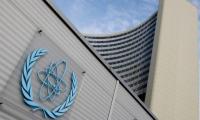The economic situation continues to deteriorate even in the new fiscal year. With an IMF programme in full force, the challenges are enormous. Our first test will come once this quarter finishes and the number crunching starts.
News coming from government sources itself confirms the seriousness of the situation. Consider the reports released by the government on full year fiscal deficit.
First, fiscal deficit for the last fiscal year is 8.9 percent of GDP. This is the highest in the last 30 years or so. The worse is the last quarter of the fiscal year – deficit going up from 5 percent by end March 2019 to a staggering 8.9 percent, an increase of 3.9 percent in one quarter. It was bad enough till March 2019 but what exactly happened in the last quarter? Asad Umar was replaced as FM in mid-April. Was that the right time to make important changes? Whatever the reasons, we ended up in a complete fiasco. Worse: the numbers are reported with no explanation for the abnormal increase.
What about the forecasting? No one expects forecasts with 100 percent accuracy but missing targets by miles does not reflect well on the part of this government. As a minimum, we are entitled to understand the rationale of setting a fiscal deficit target of 5.1 percent back in September 2018 and ending up finally with 8.9 percent. There must be some rationale regarding the missing of this target by a wide margin.
Importantly, there must be some accountability and someone held responsible for getting the fiscal deficit to where it finally reached. After all the price of this high fiscal deficit will have to be borne by the people of Pakistan who were expecting better times under PTI government rather than the misery that they are facing now.
Second, according to the figures released by the government, public debt and liabilities have gone up from Rs30 trillion to more than Rs40 trillion – an increase of Rs10 trillion in just one year. Just for people to comprehend this gigantic increase, consider that in the first 71 years of Pakistan, total debt and liabilities were Rs30 trillion and in the last year only, the present government has added one third of that amount. Again, there is no explanation officially for this massive increase.
People need to be taken on board why such an increase took place in just one year and whether this was an extraordinary year and things will come under control from this fiscal year. In the absence of any explanation, most people would conclude that the government has no control and that debt in the same proportion will be accumulated in the next four years. That is why we not only need to understand the rationale behind this massive increase but also a government plan to contain debt in the next few years. PM Imran in an interview in March this year said that he would bring down the debt to Rs20 trillion. When and how is the question.
Most Pakistanis would recall Imran Khan’s focus, before the elections, on the high amount of debt taken during the 10 years of the PPP and PML-N’s regimes. He was not only critical of the debt accumulated but also suggested that the high amount of debt was a result of corrupt practices. Indeed, he remained committed to his point of view after coming into power and accordingly appointed a debt commission to investigate the same.
If the PPP and PML-N are being investigated for adding Rs24 trillion towards debt and liabilities in 10 years, does it make sense that the present government having added Rs10 trillion in one year is not investigated?
The news about the worsening fiscal deficit and high amount of debt and liabilities is enough to raise concern about the state of the economy. Both are abnormal numbers and cannot be justified under any pretext. It could actually become unsustainable if the two indicators remain as bad as they are today.
All other sectors of the economy are either as bad as the two numbers mentioned above or worse in most cases. Also, in the news these last few days have been reports about the worsening situation in the cement sector, steel sector and auto sector – in all cases demand plummeting and reflecting our overall economic situation.
Also of concern is the crowding out of the private sector as far as lending is concerned. As a result of an understanding with the IMF, the federal government is no more borrowing from the SBP, and instead is now borrowing from commercial banks. There’s nothing better for the commercial banks than lending to the government – no risk, no assessment, 100 percent recovery with interest assured; so why would the banks be interested in lending to the private sector? With businesses already reeling from the economic slow-down of, this crowding out will further add to our economic problems.
There are several reasons why the economy has gone from bad to worse during the last one year. At least the government has recognized an important area which had contributed to the dismal economic situation. Recently, the federal cabinet blamed the behaviour of NAB to the worsening economic situation. According to the government spokesperson, the economy has been badly affected and investment has come to a grinding halt. The cabinet also expressed concern that bureaucrats are not taking key decisions due to fear of NAB.
The cabinet is right in coming to this conclusion. NAB must pursue its accountability drive but it must also understand that it cannot create fear among businesses resulting in what the cabinet itself recognized as ‘crippling of the economy’. If there is no change in the way NAB has handled things, it could get even worse.
The government on its part must understand that opening every business transaction of the previous government will not help improve the economy. The LNG case is a classic example where NAB even after several months is finding it difficult to in frame charges against Shahid Khaqan Abbasi, Miftah Ismail and Imranul Haq (former Engro executive). This is also contributing towards a poor economic environment.
Other poor decisions requiring immediate attention include reducing the discount rate. Increasing the discount rate from 5.75 percent to 13.25 percent over an 18-month period has had disastrous consequences for businesses. No business in the world can absorb such significant increases in interest rates. In the name of controlling inflation, our monetary policy has played havoc and the results are there for everyone to see.
Devaluation decisions on a massive scale also contributed to the economic mess. No business can absorb such wild swings as we saw during the last one year. In mid-April, former FM Asad Umar stated that the rupee dollar parity had found equilibrium and therefore there were no chances of further devaluation. The rate then was 140. How it went up to 160 and beyond is not understood – but hopefully we will see a more stable currency movement this fiscal year.
Finally, the government should stop bad-mouthing our own economy. It’s time to build up positivity and remove uncertainty. It’s time to create a ‘feel-good factor’; only then will the markets respond and investors come back to invest. It’s time for the government to learn from its mistakes of the last one year. Will things change? I doubt it.
The writer is former governor Sindh and former minister for privatisation.
State Bank overlook considerable challenges surrounding Pakistan's economy
Pakistan remains mired in what can only be described as a ‘Baby Boomer Syndrome’
Distancing madrassas from the education sector could jeopardise this path for millions of madrassa students
University leadership tends to equate success with more academic departments, larger student intakes, and grander...
Kurram remains mired in conflict, with violent tribal rivalries over land claims continuing to destabilise region
Political leaders often make lofty promises to secure political support but fail to deliver once in office







